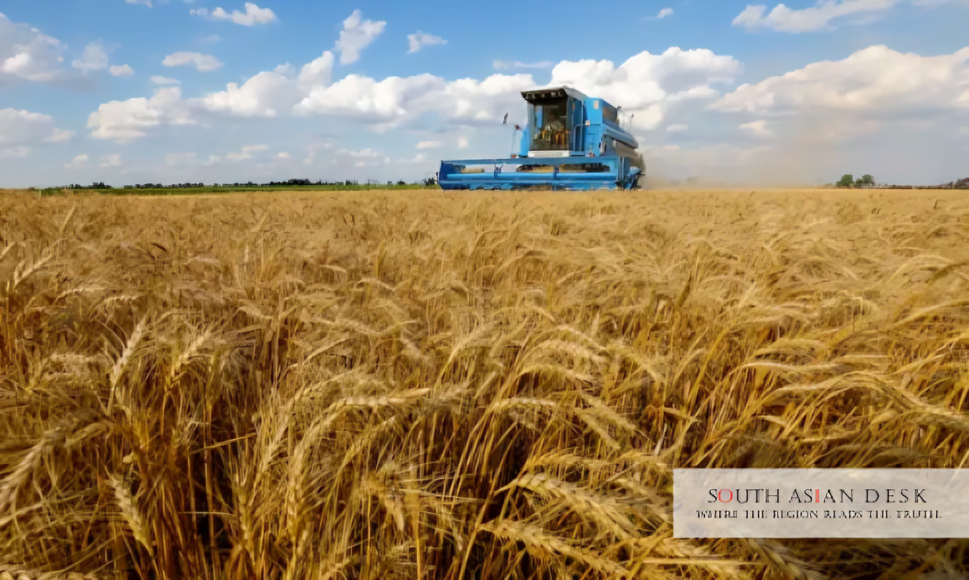Pakistan’s reservoirs brim with unprecedented water levels, promising relief for farmers after floods ravaged summer crops but can this bounty avert broader food security woes?
Islamabad, Monday, September 22, 2025 – Pakistan will commence the Rabi season 2025 on October 1 with record water storage exceeding 13.1 million acre-feet (MAF) across key reservoirs, officials from the Indus River System Authority (IRSA) and Water and Power Development Authority (WAPDA) confirmed, attributing the surplus to robust Kharif inflows despite widespread flooding. This development, centred in Punjab and Khyber Pakhtunkhwa, aims to support wheat and other winter crops amid climate uncertainties.
In a region where agriculture underpins economies and livelihoods, the record water storage for the Rabi season in Pakistan could stabilise yields in the world’s fifth-largest wheat producer, potentially easing inflation pressures across South Asia. Yet, persistent flood damages and siltation challenges underscore the fragility of water management in flood-prone agrarian belts from Punjab to Sindh.
Record Water Storage Ushers in Optimism for Rabi Season 2025
The impending Pakistan Rabi season 2025 marks a pivotal shift from recent water-scarce winters, as reservoirs approach near-full capacity for the first time in years. According to data from WAPDA, the combined storage in Tarbela, Mangla, and Chashma now stands at over 13.1 MAF, representing 99% of the 13.3 MAF peak conservation limit. This contrasts sharply with last year’s 11.388 MAF at the season’s outset, signalling a potential turnaround for irrigation-dependent farming.
An official from IRSA, speaking on condition of anonymity, stated: “We expect the water situation in the Rabi season to be normal after many years.” According to the Ministry of Water Resources, this healthy carryover from the Kharif season despite 24 MAF of floodwaters spilling into the Arabian Sea since April 1 positions the country to meet most crop demands without severe rationing.
Tarbela Dam, the nation’s largest reservoir on the Indus River, has held steady at its maximum conservation level of 1,550 feet since August 2025, surpassing prior peaks of 1,548 feet in 2023 and 1,549 feet in 2024. Mangla Dam, fed by the Jhelum River, currently stores 7.1 MAF at 1,239.6 feet, mere inches from its 1,242-foot cap and 7.277 MAF limit, though low Jhelum flows have tempered further gains. Inflow at Mangla hovers at 18,800 cusecs, with 9,000 cusecs diverted to the Upper Jhelum Canal for potable supplies. Chashma Barrage, meanwhile, has achieved a record 649 feet, eclipsing 645 feet from 2023 and 646 feet in 2024.
These levels, verified through WAPDA’s daily bulletins, reflect effective floodwater harnessing post-monsoon deluges that submerged vast farmlands in Punjab and Sindh. However, officials caution that heavy sand deposits unlike typical fertile silts, now blanket affected plains, complicating post-flood recovery. All major rivers flow normally, save for medium floods at Kotri Barrage and Ganda Singhwala on the Sutlej.
IRSA’s Role in Allocating Record Water Storage for Rabi Pakistan
Under the 1991 Water Apportionment Accord, IRSA oversees biannual distributions, empowering it to assess availability and provincial shares for Kharif (April–September) and Rabi (October–March) cycles. For the Pakistan Rabi season 2025, total requirements stand at 37–38 MAF, with projected supplies nearing 35–36 MAF via carryover and river flows. This minimal 2–3 MAF gap, officials deem “bearable and manageable,” could spare wheat, the dominant Rabi crop from acute shortages.
IRSA’s technical and advisory committees, typically convening in late September, remain unscheduled as provinces withhold indents amid receding floods. According to IRSA, Sindh, historically proactive on Rabi allocations has deferred requests due to ongoing inundation, delaying equitable shares for Punjab (55.94%), Sindh (42.22%), and others.
The record water storage Rabi Pakistan scenario benefits from Kharif’s anomalous bounty: monsoon swells filled dams rapidly, averting the 15–20% shortfalls seen in 2022 or the 35% deficits warned in March 2025. Yet, storage constraints persist; Pakistan’s 10% capture rate of 145 MAF annual surface flows lags global norms, with siltation eroding Tarbela and Mangla capacities by 30–50% since inception.
Key Crops Poised to Gain from Enhanced Supplies
Wheat, sown across 8.7 million hectares with a 28–32 million tonne target, stands to gain most, potentially offsetting Kharif losses in rice and cotton from floods. Secondary Rabi staples, gram, lentils, rapeseed, barley, mustard, and tobacco could see yields rise 5–10% with steady irrigation, per provisional agriculture ministry estimates. Punjab’s plains, contributing 70% of output, await clearance of standing waters before full sowing commences around mid-October.
Flood legacies linger: over 20 MAF wasted downstream Kotri highlights infrastructure gaps, while climate volatility exemplified by 2025’s erratic monsoons amplifies risks. Experts urge expanded reservoirs, like the delayed Diamer-Bhasha project, to sustain such record water storage Rabi Pakistan highs.
Background
Pakistan’s agrarian economy, employing 42% of the workforce and generating 24% of GDP, hinges on the Indus Basin Irrigation System the world’s largest contiguous network. Historical shortages, like the 45% Rabi deficit in 2018 or 7.2 MAF gap in 2017, have spurred calls for policy reforms. The 2025 floods, claiming PKR 500 million in damages, underscore dual threats: excess deluges eroding soils and deficits parching fields. IRSA-WAPDA collaborations, bolstered by real-time telemetry, have improved forecasting since 2020.
What’s Next for Pakistan Rabi Season 2025
As IRSA convenes post-flood, focus shifts to equitable indents and silt mitigation. Officials anticipate “reasonable carryover” into Kharif 2026, but warn of monitoring for any shortfall spikes. With sowing imminent, the record water storage Rabi Pakistan edge offers a lifeline, yet sustainable reforms remain essential to fortify against future extremes.
Published in SouthAsianDesk, September 22nd, 2025
Follow SouthAsianDesk on X, Instagram, and Facebook for insights on business and current affairs from across South Asia.






